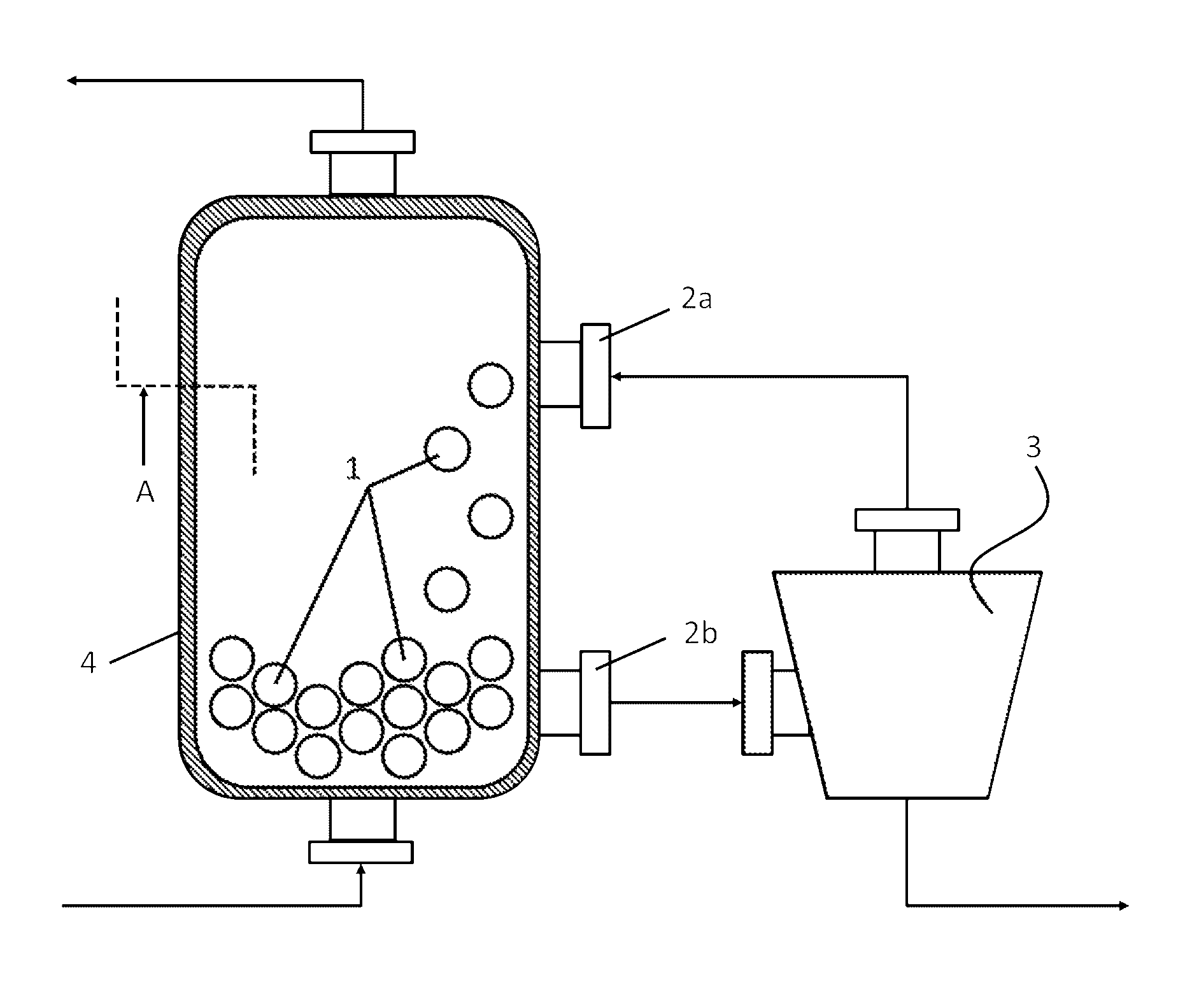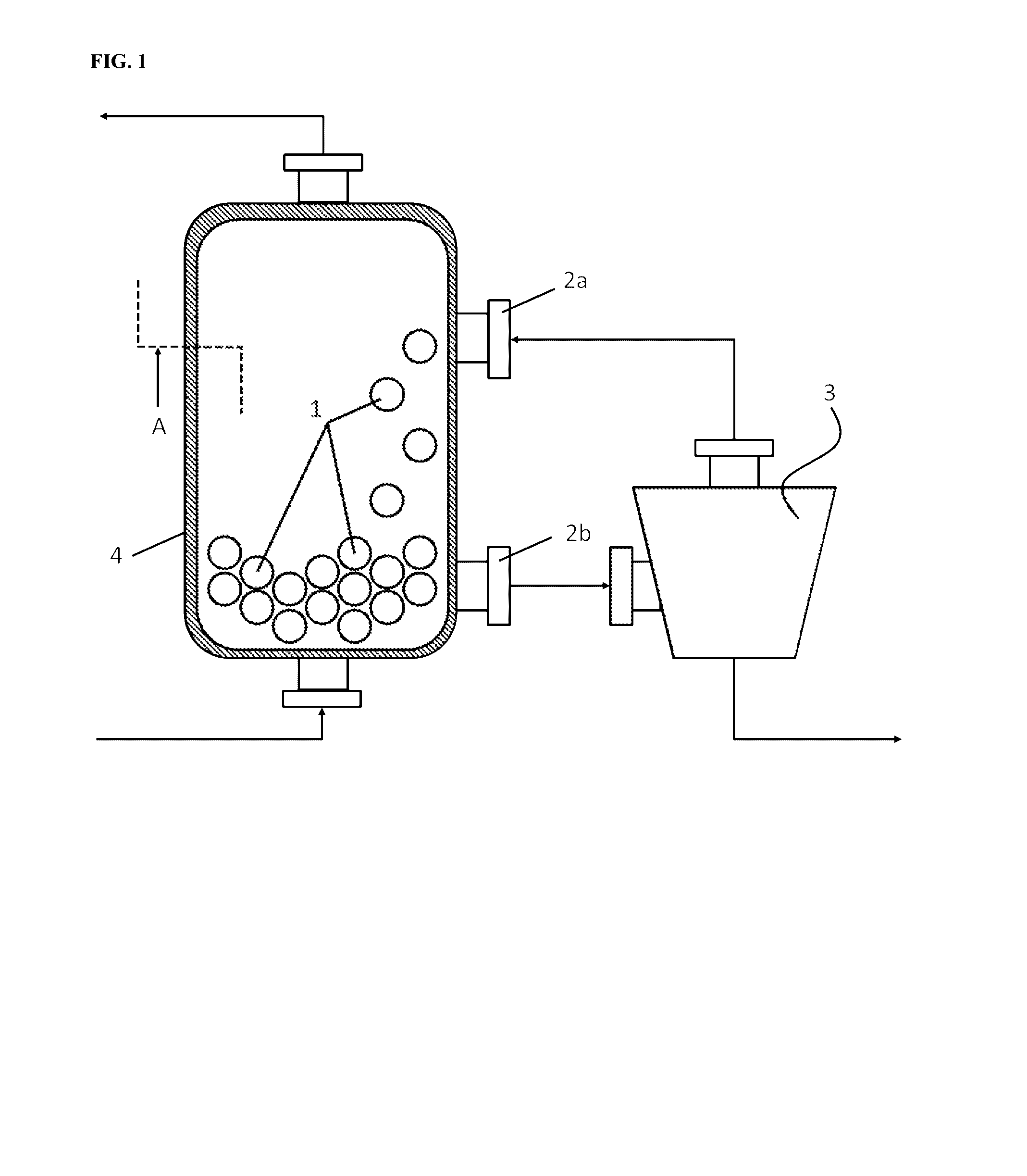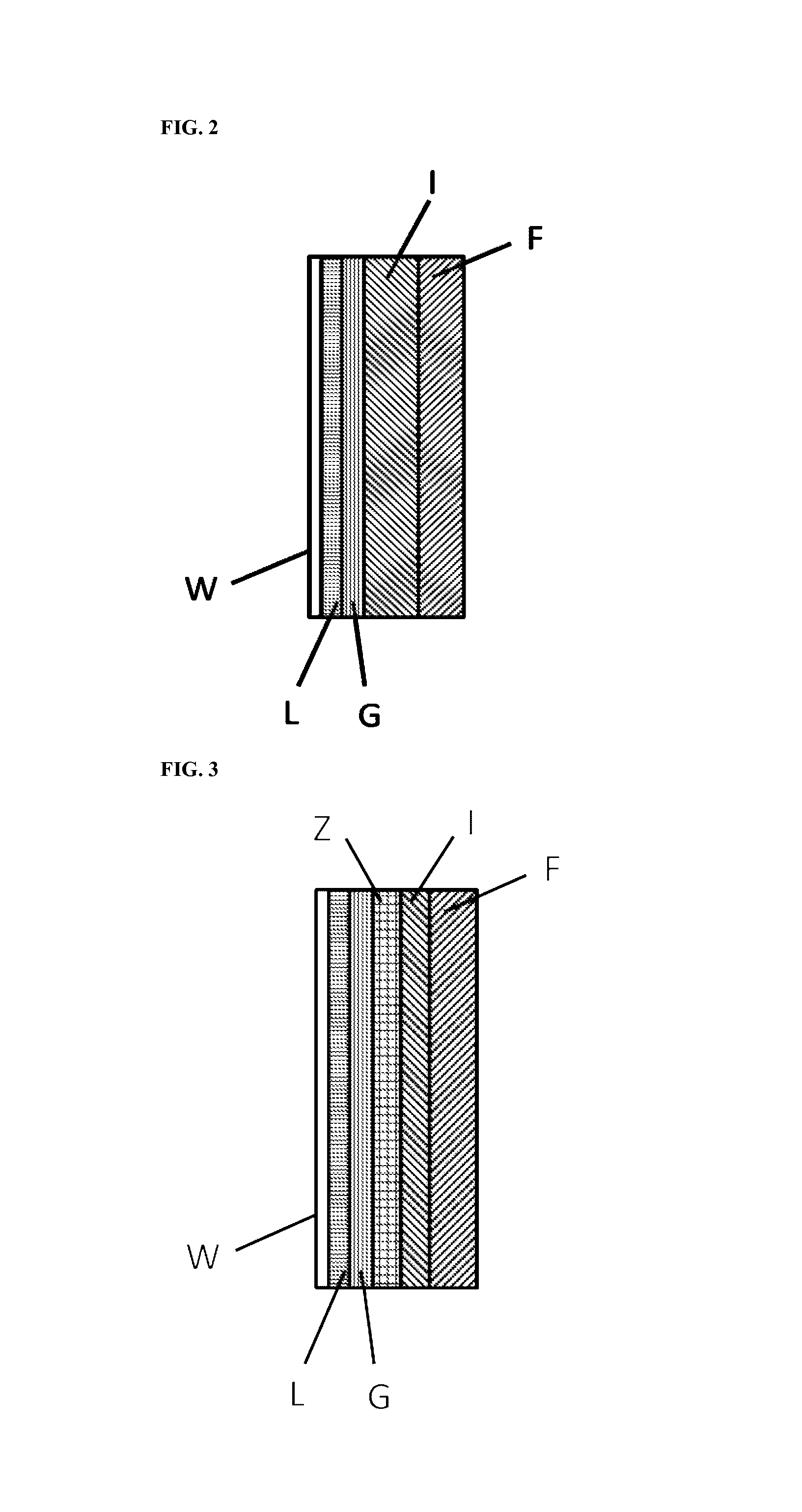Apparatus and process for treatment of haloorganosilicon compounds from offgases
a technology of haloorganosilicon and offgas, which is applied in the direction of lighting and heating apparatus, indirect heat exchangers, and separation processes, etc. it can solve the problems of inability to justify large investment in the treatment apparatus, the inability to use the rto plant and process to date, and the inability to meet the economic conditions of the situation, so as to reduce the amount of heat storage material, reduce the cost, and the effect of small siz
- Summary
- Abstract
- Description
- Claims
- Application Information
AI Technical Summary
Benefits of technology
Problems solved by technology
Method used
Image
Examples
example 1
[0094]A cold offgas stream of 20,000 kg / h with a temperature of 30° C. and a sufficient level of haloorganosilicon compounds to lead to a further temperature increase of 60 K in the case of an oxidation temperature of 900° C. fed to a regenerator according to FIG. 1 from the bottom, in which 65 t of heat storage material are present in the form of stationary heat storage material, and 80 t of heat storage material in the form of a bed. These have a maximum temperature of 960° C. in about the middle of the regenerator. In the oxidation zone around the site of the aforementioned maximum temperature, the haloorganosilicon compounds are oxidized to form the flue gas comprising the SiO2 and water conversion products, such as halogen acids. The flue gas is cooled again in the region of the bed above the oxidation zone.
[0095]The aforementioned offgas stream thus leaves the regenerator as flue gas at a temperature of 80° C.
[0096]As a result, the location of the aforementioned maximum temper...
PUM
| Property | Measurement | Unit |
|---|---|---|
| thermal conductivity | aaaaa | aaaaa |
| thermal conductivity | aaaaa | aaaaa |
| thermal conductivity | aaaaa | aaaaa |
Abstract
Description
Claims
Application Information
 Login to View More
Login to View More - R&D Engineer
- R&D Manager
- IP Professional
- Industry Leading Data Capabilities
- Powerful AI technology
- Patent DNA Extraction
Browse by: Latest US Patents, China's latest patents, Technical Efficacy Thesaurus, Application Domain, Technology Topic, Popular Technical Reports.
© 2024 PatSnap. All rights reserved.Legal|Privacy policy|Modern Slavery Act Transparency Statement|Sitemap|About US| Contact US: help@patsnap.com










